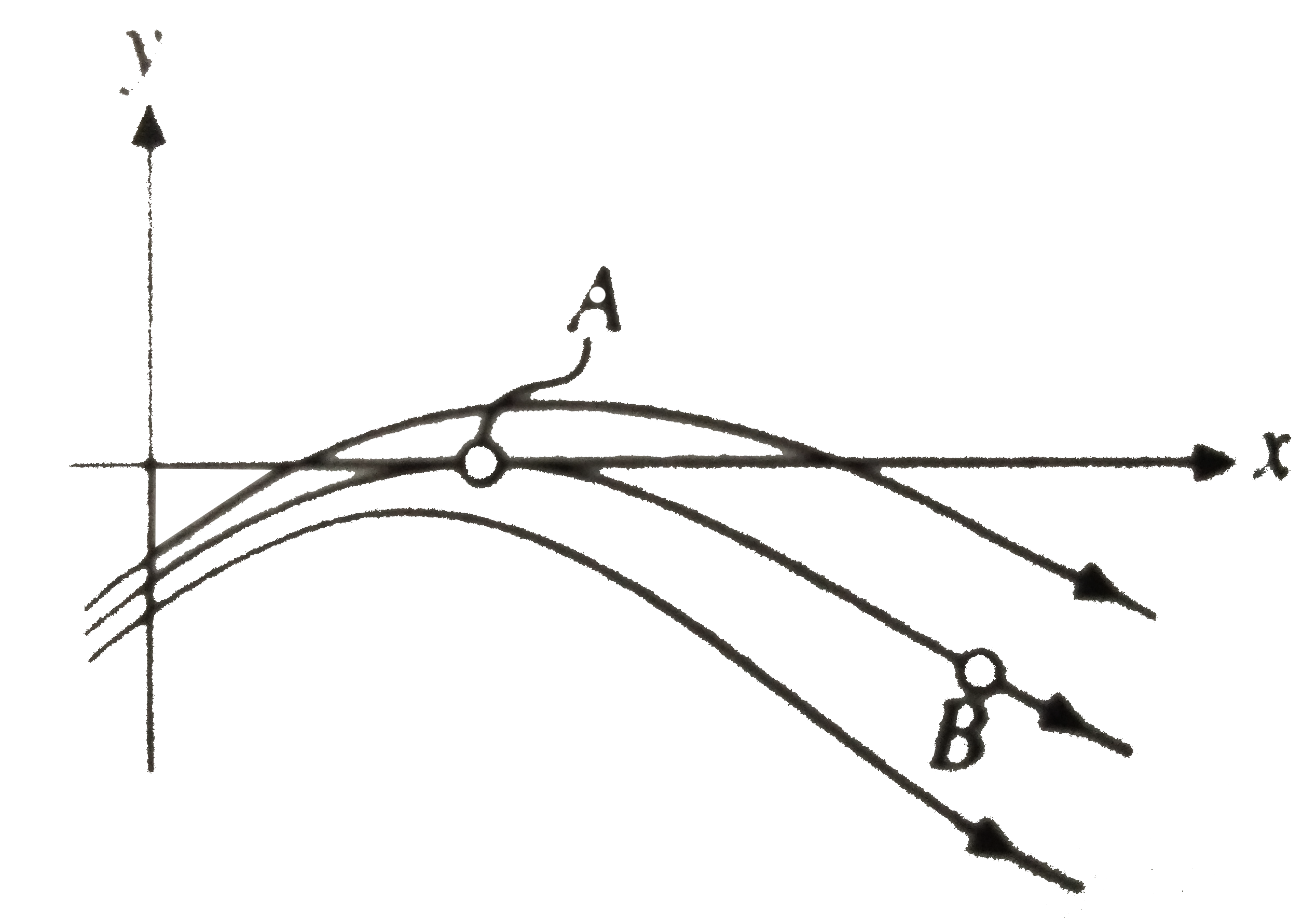Fig shows the electric field lines around three points charges A,B,C.
(a) Which charges are positive ?
(b) Which charge has the largst magnitude ? Why ?
(c ) In which region or regions of the picture could be the electric field be zero? Justify your answer.
(i) near A, (ii) near B, (iii) near C, (iv) nowhere.
(a) In fig, the electric lines of force emanate from A and C. Therefore charges A and C must be positive.
(b) As maximum number of electric lines of force are associated with charge C, it must have the largest magnitude.
(c ) There cannot be a neutral point between a positive and a negative charge. Neutral point can be there only between two like charges, ie., A and C. As magnitude of charge A is smallest than teh magnitude of charge C, therefore neutral point would lie closer to charge A.

Similar Questions
Shows the electric field lines around three point charges A,B and C.
(a) Which charges are positive ?
(b) Which charge has the largest magnitude? Why?
(##U_LIK_SP_PHY_XII_C01_E09_005_Q01.png" width="80%">
View SolutionFig. shows three electric field lines.
(a) What is the direction of the electrostatic force on a positive test charge placed at points A and B ?
(b) At which point A or B, will the acceleration of the test charge be greater if the charge is released?
 .
.
View Solution
Knowledge Check
Figure shows the electric field lines around three point charges A,B and C. Which of the following charges are positive?
 Aonly ABOnly CCBoth A and CDBoth B and C
Aonly ABOnly CCBoth A and CDBoth B and CAt which point (or points) in the given figure is the electric field zero N/C for the two point charges shown on the x axis ?
 AThe electric field is never zero in the vicinity of these charges.BThe electric field is zero somewhere on the x axis to the left of the +4q charge.CThe electric field is zero somewhere on the x axis to the right of the -2q charge.DThe electric field is zero somewhere on the x axis between the two charges, but this point is nearer to the -2q charge.
AThe electric field is never zero in the vicinity of these charges.BThe electric field is zero somewhere on the x axis to the left of the +4q charge.CThe electric field is zero somewhere on the x axis to the right of the -2q charge.DThe electric field is zero somewhere on the x axis between the two charges, but this point is nearer to the -2q charge.In the electric field of a point chargde q, a cetrain charge is carried from point A to B,C,D and E. Then the ork done
 Ais least along the path ABBis least along the path ADCis zero along all the paths AB,AC,ADandAEDis least along AE
Ais least along the path ABBis least along the path ADCis zero along all the paths AB,AC,ADandAEDis least along AE
The electric field due to a point charge at a distance 6 m from it is 630 N/C. The magnitude of the charge is
View SolutionFig. shows some of the electric field lines due to three point charges arranged along the vertical axis. All three charges have the same magnitude.
(a) What are the signs of each of the three charges? Explain your reasoning.
(b) At what points(s) is hte magnitude of hte electric field the smallest? Explain your reasoning. Explain how the fields produed by each individual point charge combine to give a small net field at this point or points.
(c ) Two point charges q and -q are placed at a distance d apart. What are the points at which the resultant electric field is parallel to the line joining the two charge?
 .
.
View SolutionSketch field lines due to (i) two equal positive charges near each other (ii) a dipole.
View SolutionThe magnitude of electric field intensity due to a point charge is 10 N/C at a distance 1 m from it. Calculate the magnitude of charge.
View SolutionThe magnitude of electric field intensity and electric potential due to a point charge at a point is 72 N/C and 36V, respectively. Calculate magnitude of the charge and distance of the point from point charge.
View Solution

